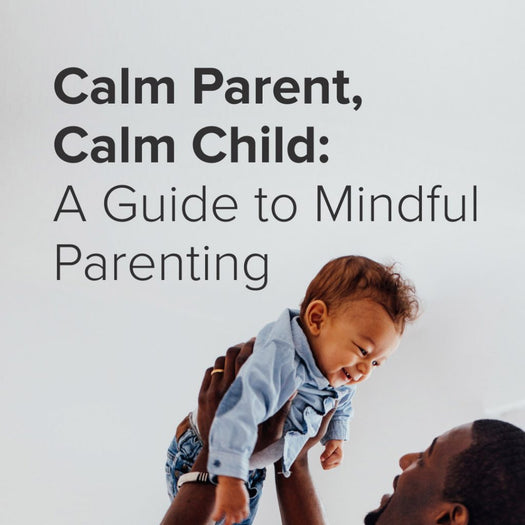Calm Parent, Calm Child: A Guide to Mindful Parenting

Calm Parent, Calm Child. A Guide to Mindful Parenting.
By Christopher Willard
In my work consulting with schools or running mindfulness workshops with parents, I’m asked the same question again and again. “How do I get more mindful kids?” The answer is not always what those caregivers want to hear.
The reality is that I know how to get stressed out miserable kids, it’s easy, you surround them with stressed-out miserable adults. But, that means that the opposite is probably true as well: that the best way to raise mindful, compassionate kids, is to surround them with mindful, compassionate adults.
That’s right, it starts with you.
Stress and other negative emotions are unfortunately contagious. And we know that our kids, for better or worse, imitate our behaviour as parents. But there’s good news there too, mindfulness, optimism, compassion are all contagious too – in families, schools, workplaces and other groups and communities.
So it’s up to us to set the tone for mindfulness, and in fact, our own mindful presence is probably more important for our kids development than breathing practices we try to force on them.
What is mindful parenting?
To me, mindful parenting is about parenting from the present – not out of fear of the future, not a projection or reaction to your child’s behaviour, but from a place of awareness and intention. Prefrontal parenting I sometimes call it.
“But maybe more skillful than striving to parent “better”, is to stop thinking of parent as a verb, and think of it as a noun, just be a parent, and try not to “parent” quite so hard. “
That kind of letting go can bring a lot of relief to many of us. In that way, we end up intuitively doing what we need to for our kids. This is mostly about being present – physically and emotionally. Most of all it’s about being attuned to what their needs and wants are and the difference between the two.
A consensus between multiple literature reviews (1)(2) define mindful parenting on five dimensions:
- Listening with full attention: this means building an awareness of the child’s perspective through the content of conversation, tone, facial expression and body language.
- Non-judgemental acceptance of self and child: this means recognizing and accepting your own and your child’s traits, attributes, and behaviours.
- Emotional awareness of self and child: parents are able to identify their own and their child’s emotions and respond appropriately (instead of reacting).
- Self-regulation in the parenting relationship: simply put – it is about pausing before reacting.
- Compassion for self and child: it is the desire to alleviate suffering which can be harsh inner critical voices of yourself, or the ability to comfort a distressed child.
Why is mindful parenting important?
It’s no surprise that some families can be confused by the shifting trends in parenting styles. From Authoritative to Authoritarian, to controlling v.s passive (6) it can be challenging to know exactly which path is best to pursue for your child.
One thing that is clear is that practicing mindfulness can help you better notice and understand the needs of your unique child, allowing you to respond more effectively. Research in the field has shown significant benefits for both parent-child relationships and the child’s psychological wellbeing (2)(3)(5).
What are the benefits of mindful parenting?
When we are more mindful parents, it affects the people around us in a number of positive ways. Consistent mindful parenting (even if co-parents or kids roll their eyes) is linked to the following (2)(3)(5):
- Family happiness
- Better communication
- Fewer accidents in the home
- A decrease in anxiety, depression and acting out in children
- An increase in shared positive emotions between parent and child during conversations
- Decreased drug use in children
- Positive coping and or emotional regulation in children
What I know from my own experience
Additionally, in my work I have witnessed parents of special needs kids who practice mindfulness see both their own emotional reactivity improve and report that their kids are doing better as well.
When one person in a parenting couple practices mindfulness, both appear to be happier with the relationship and have fewer conflicts. Interestingly, in other living situations, during weeks where one roommate is meditating, the other roommates reported a better mood in themselves (6).
Although more investigation needs to be conducted on these findings – one opposing theory is that being a mindful parent alone might not be enough to foster the benefits mentioned above.
Moreover, it’s the child’s perceived parental warmth that is linked to the beneficial outcomes (2). It’s clear either way, that on so many levels, we set the tone for our families in mood and behaviour.
A simple exercise to practice mindfulness with your family
We have to admit, convincing our little kids to sit still for twenty minutes with their eyes closed sounds like a dream but may not be realistic. Most of us can barely practice ourselves without one of our own kids interrupting with an impromptu jump to the head, blast of music or demand for a ride somewhere once they are teens.
That said, I do get time here and there to practice as a parent – and find some ways to share practice with my own kids. One of the practices I do with my kids is called the CALM reminder, a simple acronym for Chest, Arms, Legs, Mouth. The practice focuses on relaxing the body, because as we relax our body, it becomes easier for stress and anxiety to dissolve.
Take some time over ten or fifteen minutes to practice it with your kids before bed. Find a comfortable place where you hopefully won’t have anyone jumping on top of you, and close your eyes if you feel comfortable.
Take a few breaths, extending the out-breath a little bit each time. Begin by bringing awareness first to:
C is for Chest
What sensations do you notice in your chest and torso? Temperature, or tension? Notice the rate of heartbeat and breath. What information is your body giving you? Now just tense all the muscles in your chest, and release them, and turn your awareness to…
A is for Arms
What do you notice in your arms and hands? Are your hands warm or cold, sweaty or dry? Tense or relaxed? What about your forearms, biceps and triceps? Now clench all of the muscles from your shoulders to your fingers, holding for a few breaths, and just release. Then shift your attention to…
L is for Legs
What is happening in your legs, from the soles of your feet up to your thighs? Are they tense or relaxed? Are they bouncing or still? What are your legs telling you? Now take a breath in and squeeze these muscles for a moments, then relax, letting the relaxation flow in.
M is for Mouth
Lastly, check in with your mouth and jaw. This is another spot we hold a lot of tension and emotion, you might even notice what resting expression is on your face communicating your emotions to the world or back to yourself Now clench your jaw, holding for a few minutes, and then relax as you shift your mouth into a slight smile.
About Dr. Christopher Willard
Dr. Christopher Willard, (Psy. D.) is a clinical psychologist, author and consultant based in Massachusetts. He is the author of twelve books, including Alphabreaths, Growing Up Mindful, and The Breathing Book, translated into more than ten languages. He has been invited to more than two dozen countries to teach and presented at TEDx events. His thoughts on mental health have been featured in The New York Times, The Washington Post, mindful.org, and elsewhere. He teaches at Harvard Medical School. Read below about how Christopher defines mindful parenting, why it’s important and how to begin practicing it in your own family life.
References:
- Duncan, L. G., Coatsworth, J. D., & Greenberg, M. T. (2009). A model of mindful parenting: implications for parent-child relationships and prevention research. Clinical child and family psychology review, 12(3), 255–270. https://doi.org/10.1007/s10567-009-0046-3
- Wang, Y., Liang, Y., Fan, L., Lin, K., Xie, X., Pan, J., & Zhou, H. (2018). The Indirect Path From Mindful Parenting to Emotional Problems in Adolescents: The Role of Maternal Warmth and Adolescents’ Mindfulness. Frontiers in psychology, 9, 546. https://doi.org/10.3389/fpsyg.2018.00546
- Wong, K., Hicks, L. M., Seuntjens, T. G., Trentacosta, C. J., Hendriksen, T., Zeelenberg, M., & van den Heuvel, M. I. (2019). The Role of Mindful Parenting in Individual and Social Decision-Making in Children. Frontiers in psychology, 10, 550. https://doi.org/10.3389/fpsyg.2019.00550
- Suttie, J., (2016). Mindful Parenting May Keep Kids Out of Trouble. Greater Good Magazine, online at https://greatergood.berkeley.edu/article/item/mindful_parenting_may_keep_kids_out_of_trouble [Accessed June 3, 2020]
- Farzand, Maryam & Çerkez, Yagmur & Çavuşoğlu, Çise. (2017). Empirical Studies on Parenting Styles: A Trend Analysis. International Journal of Educational Sciences. 19. 152-158. 10.1080/09751122.2017.1393959.
- Willard, C., (personal communication, June 17, 2020).



